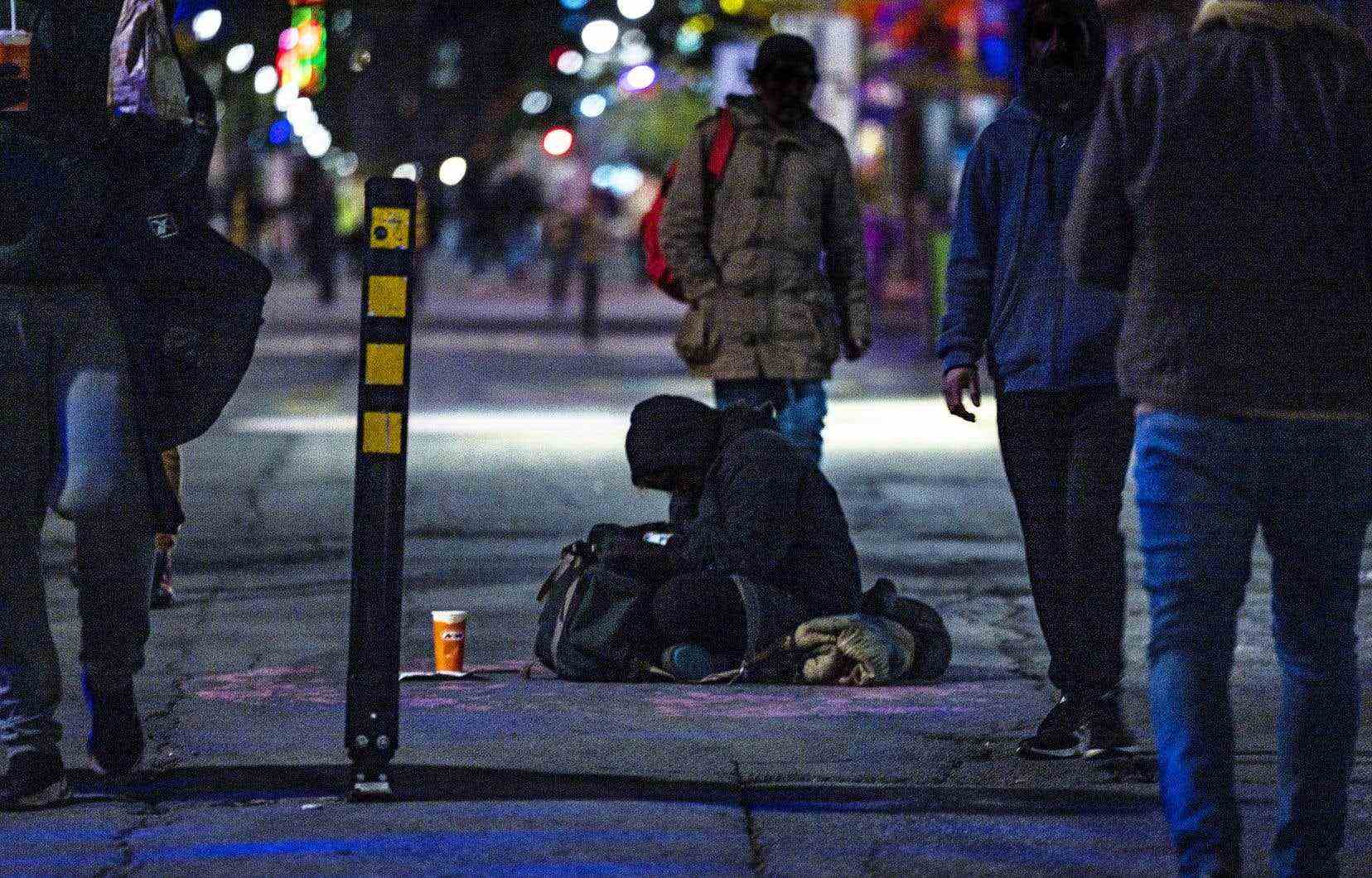Organizations that help the homeless fear the worst with overflowing resources and the cold season that is settling in Quebec. They urge the government to act by December 15 in five regions where the situation is particularly critical.
“We are afraid that there are people dying in the street. Nick Paré is coordinator of the Regional Collective for the Fight against Homelessness in the Outaouais (CRIO), one of the places where the homelessness situation is the most critical in Quebec. For lack of beds in sufficient numbers at Gîte Ami, “more than fifty people” sleep around the building in the Hull sector, he explains. “Organizations say they have never seen so many tents in front of the B&B and in the surrounding woods. »
Failing to enter the shelter, the homeless can certainly go warm up at the heat shelter in the former Robert-Guertin arena. This type of resource was designed to allow people to warm up, rest, have a coffee before leaving. However, it is not uncommon for homeless people to sleep on the floor there. And again, there too, space is lacking.
“Before 2018, Gîte Ami was able to meet the demand for homelessness in the Outaouais,” explains Mr. Paré. Now they just can’t do it anymore. It has become that even a 60-seater heat shelter is no longer capable of providing. »
The situation “is critical” in the Outaouais, writes the Réseau Solidarité Itinérance du Québec (RSIQ) in a document sent on December 2 to the Ministry of Health and Social Services. In addition to the Outaouais, four regions are particularly overwhelmed by needs: around Saint-Hyacinthe, Laval, Saguenay and Montreal.
On Tuesday, MP Manon Massé also challenged the government on this subject. “We do not have a portrait of the situation of the deployment of resources in terms of winter emergency accommodation,” she denounced. ” It’s necessary [le ministre Lionel Carmant, responsable des services sociaux] provide us now and in a transparent way with the portrait of the situation, then not just for Montreal, then Quebec. Go see the mayors of Drummondville, Sainte-Agathe and Chicoutimi. »
Whose responsibility is it?
Minister Carmant’s office retorts that the CAQ government has already added a lot of resources for the fight against homelessness. “Now there are beds 24/7 year-round,” replied her publicist. “Just in Montreal, it’s more than 1,600 beds, whereas we were at around 900 before the pandemic. »
“We will be present as and when needs arise,” continues the Minister’s press attaché.
The government wants to put an end to the “cycles” of opening and closing beds according to emergencies. A priority that was at the heart of the Interdepartmental Homelessness Action Plan (2021-2026) launched in the fall of 2021, with nearly $280 million in investments.
At the time, homelessness aid organizations praised the plan. But a year later, they find that everything is to be done. “In the action plan, the cities have no role and no responsibility”, observes the director of the RSIQ, Boromir Vallée Dore. “How is it that the cities have not gotten involved in this action plan? Street worker in Saguenay, Yany Charbonneau says that services are overflowing in the Chicoutimi sector. “We have people sleeping on the streets. As the services are overflowing, we lack solutions for them, and we cannot turn to the housing stock, because there is none. We find ourselves with our hands tied. »
In Saguenay, there is no drop-in heat either, she says, but a crisis unit has been created to unlock new services.
On the Saint-Hyacinthe side, the city and the health network “exert pressure on community groups” to deploy winter measures, notes the RSIQ. However, the organizations are short of staff, and no financial envelope for the winter is planned.
In Laval too, the city “seems to be counting on community organizations” to take charge of heat stops, but there again, “there is no funding announced”.
Finally, in Montreal, “we are at the start of winter, and the resources are already overflowing,” continues the RSIQ in the document it sent to the ministry.
A widespread issue
If the situation is worse in these five regions, the problem is widespread throughout Quebec. From Trois-Rivières to Sherbrooke, via Roberval and Drummondville, municipalities unaccustomed to dealing with homelessness have had to create crisis units or drop-in heat centers. In Quebec, for example, a new heat shelter, the Nocturnal Chimney, is due to open on December 12. The director of the Lauberivière house, Éric Boulay, is looking forward to this day. The organization he leads is not able to open its doors to everyone. “We refuse people for lack of space,” he said. The people he cannot accommodate will at least be able to warm up in the new resource.
In the capital as elsewhere, the organizations are particularly overwhelmed on evenings and weekends, when the shortage of personnel is particularly felt. The city, for its part, recommended that the Union of Quebec Municipalities (UMQ) hold a summit on homelessness. A proposal that has been accepted, but no date has yet been set for the holding of the event.
